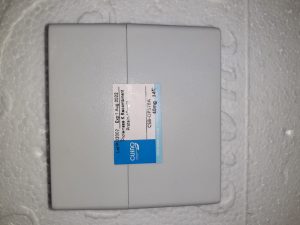Antibodies, Assay Kits, cDNA, Clia Kits, Ctip Antibody, Culture Cells, Devices, DNA, DNA Templates, Elisa Kits, Enzymes, Equipments, Exosomes, Gels, Irak3 Antibody, Mmp14 Antibody, Nedd8 Antibody, Nmnat1 Antibody, Nse Antibody, Otx2 Antibody, Panel, Particles, PCR, Peptides, Reagents, Recombinant Proteins, Rfp Antibody, Ria Kits, RNA, Sod2 Antibody, Stat5 Antibody, Trpa1 Antibody, Vector & Virus, Vitronectin Antibody
Effectiveness of Salivary Glucose in Diagnosing Gestational Diabetes Mellitus
Context: Frequent monitoring of glucose is essential within the administration of diabetes. A noninvasive painless approach was used to detect glucose ranges with using saliva as a diagnostic fluid.
Goals: The goal of our examine was to correlate the blood glucose ranges with stimulated and unstimulated salivary samples and likewise to evaluate the reliability of utilizing salivary glucose in diagnosing and monitoring the blood glucose ranges in gestational diabetic sufferers.
Settings and design: The examine was performed amongst 100 clinically wholesome nondiabetic people and 99 people affected by gestational diabetes mellitus (GDM).
Topics and strategies: Fasting blood glucose estimation and postprandial salivary glucose estimation have been finished in stimulated and unstimulated salivary samples utilizing glucose oxidase/peroxidase methodology.
Statistical evaluation used: Knowledge obtained have been subjected to normality check, and P ≤ 0.05 was thought-about to be statistically important. The correlation between blood and salivary glucose ranges was evaluated utilizing Pearson’s correlation check.
Outcomes: A constructive correlation was obtained for stimulated and unstimulated salivary samples in fasting and postprandial situations. Linear regression evaluation and receiver working attribute curve have been plotted, and the optimum cutoff worth for unstimulated and stimulated salivary glucose beneath fasting situations was 5.1 mg/dl and 5.four mg/dl, respectively. The optimum cutoff worth for unstimulated and stimulated salivary glucose was 8.Eight mg/dl and 9.Three mg/dl, respectively, in postprandial situations.
Increasing the clinicopathological spectrum of TGFBR3-PLAG1 rearranged salivary gland neoplasms with myoepithelial differentiation together with proof of high-grade transformation
PLAG1 rearrangements have been described as a molecular hallmark of salivary gland pleomorphic adenoma (PA), carcinoma ex pleomorphic adenoma (CEPA), and myoepithelial carcinoma (MECA). A number of fusion companions have been described, nevertheless, generally no additional task to the afore talked about entities or a morphological prediction could be made based mostly on the information of the fusion associate alone. In distinction, TGFBR3-PLAG1 fusion has been particularly described and characterised as an oncogenic driver in MECA, and fewer widespread in MECA ex PA. Right here, we describe the clinicopathological options of three TGFBR3-PLAG1 fusion constructive salivary gland neoplasms, all of which arose within the deep lobe of the parotid gland.
Histopathology confirmed excessive morphological similarities, encompassing encapsulation, a polylobular progress sample, bland basaloid and oncocytoid cells with myoepithelial differentiation, and a definite sclerotic background. All instances confirmed not less than restricted, uncommon foci of minimal invasion into adjoining salivary gland tissue, together with one case with ERBB2 (Her2/neu) amplified, TP53 mutated high-grade transformation and lymph node metastases. Of notice, all instances illustrated focal ductal differentiation.
Classification stays tough, as morphological overlaps between myoepithelial-rich mobile pleomorphic adenoma, myoepithelioma and myoepithelial carcinoma have been noticed. Nevertheless, proof of minimal invasion advocates classification as low-grade myoepithelial carcinoma. This case sequence additional characterizes the spectrum of unusual mobile myoepithelial neoplasms harboring TGFBR3-PLAG1 fusion, which present recurrent minimal invasion of the adjoining salivary gland tissue, a predilection to the deep lobe of the parotid gland and potential high-grade transformation. This text is protected by copyright. All rights reserved.
Sox + cells are required for salivary gland regeneration after radiation harm through the Wnt/β-catenin pathway
Radiotherapy for head and neck most cancers could cause critical unwanted side effects, together with extreme harm to the salivary glands, leading to signs akin to xerostomia, dental caries, and oral an infection. As a result of lack of long-term therapy for the signs of xerostomia, present analysis has centered on discovering endogenous stem cells that may differentiate into varied cell lineages to exchange misplaced tissue and restore features. Right here, we report that Sox9+ cells can differentiate into varied salivary epithelial cell lineages beneath homeostatic situations. After ablating Sox9+ cells, the salivary glands of irradiated mice confirmed extra extreme phenotypes and the diminished proliferative capability.
Evaluation of on-line single-cell RNA-sequencing knowledge reveals the enrichment of the Wnt/β-catenin pathway within the Sox9+ cell inhabitants. Moreover, therapy with a Wnt/β-catenin inhibitor in irradiated mice inhibits the regenerative functionality of Sox9+ cells. Lastly, we present that Sox9+ cells are able to forming organoids in vitro and that transplanting these organoids into salivary glands after radiation partially restored salivary gland features. These outcomes recommend that regenerative remedy focusing on Sox9+ cells is a promising method to deal with radiation-induced salivary gland harm.
Cribriform adenocarcinoma of minor salivary glands offered as a nasopharyngeal tumor: A case report highlighting the importance of cytology
Cribriform adenocarcinoma of minor salivary gland (CAMSG) is a uncommon malignancy presenting cytologic options resembling papillary thyroid carcinoma, localized within the oral cavity and oropharynx. Though cervical lymph node (LN) metastasis is a frequent manifestation of CMSG, there are few publications evaluating its cytology.
The goal of this report was to current a CAMSG in an uncommon location within the mild of cytologic options, thereby enriching the spectrum of fine-needle aspiration biopsy (FNAB) differential diagnosis. We report a case of a 76-year-old lady presenting an enlarged submandibular LN on bodily examination.
Computed tomography revealed a submucosal lesion located predominantly within the nasopharynx. FNAB and subsequently an open biopsy of submandibular LN have been performed. In cytologic smear cribriform, dense clusters of monomorphic round-oval tumor cells with scant cytoplasm have been noticed. Histologically, the tumor was composed of oval, overlapping cells with brilliant nuclear chromatin and nuclear grooves forming cribriform, papillary, and strong constructions.
Immunohistochemistry panel revealed the next: TTF-1 (-), thyroglobulin (-), S100 (+), p63 (+), Gal-3 (+), and CK19 (+) focally. The prognosis of CAMSG needs to be thought-about when coping with nasopharyngeal mass. Generally, nodal metastases are noticed on this tumor; subsequently, acceptable analysis of cytologic smear is essential for affected person administration.
N-acetylcysteine supplementation didn’t reverse mitochondrial oxidative stress, apoptosis, and irritation within the salivary glands of hyperglycemic rats
Background/targets: Earlier research have proven that N-acetylcysteine (NAC) supplementation with the simultaneous inclusion of HFD prevents salivary glands from oxidative stress and mitochondrial dysfunction. On this experiment, we examined if NAC supplementation might reverse the dangerous impact of HFD on mitochondrial operate, cut back the severity of apoptosis, and the exercise of pro-oxidative enzymes within the salivary glands of rats with confirmed hyperglycemia.
Topics/strategies: Wistar rats have been fed the usual or high-fat (HFD) food plan for 10 weeks. After 6 weeks of the experiment, HFD rats have been identified with hyperglycemia and for the subsequent four weeks, the animals got NAC intragastrically. Within the mitochondrial fraction of the parotid (PG) and submandibular salivary glands (SMG), we assessed redox standing, irritation, and apoptosis.
Outcomes: The inclusion of NAC elevated the exercise of mitochondrial complexes I and II + III in addition to decreased the focus of interleukin-1β, tumor necrosis issue α, and caspase-3, however solely within the parotid glands of rats with hyperglycemia in comparison with the HFD group. Nevertheless, N-acetylcysteine supplementation didn’t cut back the exercise of caspase-9 or the Bax/Bcl-2 ratio in PG and SMG mitochondria.
In each salivary glands we noticed diminished exercise of cytochrome c oxidase, NADPH oxidase, and xanthine oxidase, in addition to hindered manufacturing of ROS and decrease ADP/ATP radio, however the ranges of those parameters weren’t corresponding to the management group.
Conclusions: We demonstrated that NAC supplementation restores the glutathione ratio solely within the mitochondria of the submandibular salivary glands. The availability of NAC didn’t considerably have an effect on the opposite measured parameters. Our outcomes point out that NAC supplementation offers little safety in opposition to free radicals, apoptosis, and irritation within the salivary gland mitochondria of HFD rats. Stimulated salivary secretion in hyperglycaemic rats supplemented with NAC appears to be intently associated to mitochondrial respiratory capability and acceptable ATP stage.
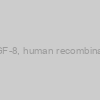 FGF-8, human recombinant |
|||
| 4053-25 | Biovision | each | EUR 320.4 |
 Mouse Monoclonal anti-human FGF-8 |
|||
| hAP-0291 | Angio Proteomie | 100ug | EUR 250 |
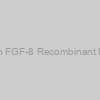 Human FGF-8 Recombinant Protein |
|||
| 100-020 | ReliaTech | 25 µg | EUR 196.35 |
|
Description: FGF-8 (FGF-8b) is a heparin binding growth factor belonging to the FGF family. Proteins of this family play a central role during prenatal development and postnatal growth and regeneration of a variety of tissues, by promoting cellular proliferation and differentiation. There are 4 known alternate spliced forms of FGF-8; FGF-8A, FGF-8B, FGF-8E and FGF-8F. The human and murine FGF-8A and B are identical unlike human and mouse FGF8 E and F are 98% identical. FGF-8 targets mammary carcinoma cells and other cells expressing the FGF receptors. Recombinant human FGF-8 (FGF-8b) is a 22.4 kDa protein consisting of 193 amino acid residues. |
|||
 Human FGF-8 Recombinant Protein |
|||
| 100-020S | ReliaTech | 5 µg | EUR 92.4 |
|
Description: FGF-8 (FGF-8b) is a heparin binding growth factor belonging to the FGF family. Proteins of this family play a central role during prenatal development and postnatal growth and regeneration of a variety of tissues, by promoting cellular proliferation and differentiation. There are 4 known alternate spliced forms of FGF-8; FGF-8A, FGF-8B, FGF-8E and FGF-8F. The human and murine FGF-8A and B are identical unlike human and mouse FGF8 E and F are 98% identical. FGF-8 targets mammary carcinoma cells and other cells expressing the FGF receptors. Recombinant human FGF-8 (FGF-8b) is a 22.4 kDa protein consisting of 193 amino acid residues. |
|||
 Recombinant Human FGF-8 Protein |
|||
| PROTP55075-2 | BosterBio | 25ug | EUR 380.4 |
|
Description: FGF-8 (FGF-8b) is a heparin binding growth factor belonging to the FGF family. Proteins of this family play a central role during prenatal development and postnatal growth and regeneration of a variety of tissues, by promoting cellular proliferation and differentiation. There are 4 known alternate spliced forms of FGF8; FGF8A, FGF-8B, FGF-8E and FGF-8F. The human and murine FGF8 A and B are identical unlike human and mouse FGF8 E and F are 98% identical. FGF-8 targets mammary carcinoma cells and other cells expressing the FGF receptors. Recombinant human FGF-8 (FGF-8b) is a 22.5 kDa protein consisting of 194 amino acid residues. |
|||
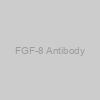 FGF-8 Antibody |
|||
| 5053-100 | Biovision | each | EUR 379.2 |
 FGF-8 Antibody |
|||
| 5053-30T | Biovision | each | EUR 175.2 |
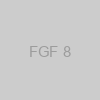 FGF 8 |
|||
| GWB-4260F7 | GenWay Biotech | 0.025 mg | Ask for price |
) Rabbit anti FGF-2 (human) |
|||
| 102-PA08S | Angio Proteomie | 100ug | EUR 240 |
 Anti-FGF-8 antibody |
|||
| STJ96802 | St John's Laboratory | 200 µl | EUR 236.4 |
|
Description: Rabbit polyclonal to FGF-8. |
|||
 OPSA11010-25UG - Human FGF 8 Protein |
|||
| OPSA11010-25UG | Aviva Systems Biology | 25ug | EUR 469 |
ELISA Kit) Human Fibroblast Growth Factor 8 (FGF-8)ELISA Kit |
|||
| SL2407Hu | Sunlong | 96 Tests | EUR 468 |
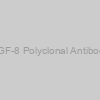 FGF-8 Polyclonal Antibody |
|||
| ABP53168-003ml | Abbkine | 0.03ml | EUR 189.6 |
|
Description: A polyclonal antibody for detection of FGF-8 from Human, Mouse, Rat. This FGF-8 antibody is for WB, ELISA. It is affinity-purified from rabbit antiserum by affinity-chromatography using epitope-specific immunogenand is unconjugated. The antibody is produced in rabbit by using as an immunogen synthesized peptide derived from the Internal region of human FGF-8 |
|||
 FGF-8 Polyclonal Antibody |
|||
| ABP53168-01ml | Abbkine | 0.1ml | EUR 346.8 |
|
Description: A polyclonal antibody for detection of FGF-8 from Human, Mouse, Rat. This FGF-8 antibody is for WB, ELISA. It is affinity-purified from rabbit antiserum by affinity-chromatography using epitope-specific immunogenand is unconjugated. The antibody is produced in rabbit by using as an immunogen synthesized peptide derived from the Internal region of human FGF-8 |
|||
 FGF-8 Polyclonal Antibody |
|||
| ABP53168-02ml | Abbkine | 0.2ml | EUR 496.8 |
|
Description: A polyclonal antibody for detection of FGF-8 from Human, Mouse, Rat. This FGF-8 antibody is for WB, ELISA. It is affinity-purified from rabbit antiserum by affinity-chromatography using epitope-specific immunogenand is unconjugated. The antibody is produced in rabbit by using as an immunogen synthesized peptide derived from the Internal region of human FGF-8 |
|||
 FGF-8 Polyclonal Antibody |
|||
| 41815 | SAB | 100ul | EUR 319 |
 FGF-8 Polyclonal Antibody |
|||
| 41815-100ul | SAB | 100ul | EUR 302.4 |
 FGF-8 Polyclonal Antibody |
|||
| 41815-50ul | SAB | 50ul | EUR 224.4 |
 FGF-8 Polyclonal Antibody |
|||
| E041815 | EnoGene | 100μg/100μl | EUR 255 |
|
Description: Available in various conjugation types. |
|||
 FGF-8 Polyclonal Antibody |
|||
| E20-75437 | EnoGene | 100ug | EUR 225 |
|
Description: Available in various conjugation types. |
|||
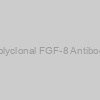 Polyclonal FGF-8 Antibody |
|||
| APR00250G | Leading Biology | 0.1mg | EUR 580.8 |
|
Description: A polyclonal antibody raised in Rabbit that recognizes and binds to Human FGF-8 . This antibody is tested and proven to work in the following applications: |
|||
 FGF-8 Polyclonal Antibody |
|||
| E44H06879 | EnoGene | 100ul | EUR 255 |
|
Description: Biotin-Conjugated, FITC-Conjugated , AF350 Conjugated , AF405M-Conjugated ,AF488-Conjugated, AF514-Conjugated ,AF532-Conjugated, AF555-Conjugated ,AF568-Conjugated , HRP-Conjugated, AF405S-Conjugated, AF405L-Conjugated , AF546-Conjugated, AF594-Conjugated , AF610-Conjugated, AF635-Conjugated , AF647-Conjugated , AF680-Conjugated , AF700-Conjugated , AF750-Conjugated , AF790-Conjugated , APC-Conjugated , PE-Conjugated , Cy3-Conjugated , Cy5-Conjugated , Cy5.5-Conjugated , Cy7-Conjugated Antibody |
|||
 Elisa Kit) Human fibroblast growth factor-8(FGF-8) Elisa Kit |
|||
| EK710367 | AFG Bioscience LLC | 96 Wells | EUR 0.86 |
 Human Fibroblast Growth Factor 8, FGF-8 GENLISA ELISA |
|||
| KBH3914 | Krishgen | 1 x 96 wells | EUR 286 |
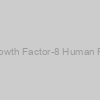 FGF-8 Fibroblast Growth Factor-8 Human Recombinant Protein |
|||
| PROTP55075 | BosterBio | Regular: 10ug | EUR 380.4 |
|
Description: FGF-8 Human Recombinant produced in HEK cells is a glycosylated monomer, having a molecular weight range of 30-45kDa due to glycosylation.;The FGF8 is purified by proprietary chromatographic techniques. |
|||
 FGF-8 Fibroblast Growth Factor-8 Human Recombinant Protein |
|||
| PROTP55075-1 | BosterBio | Regular: 25ug | EUR 380.4 |
|
Description: FGF 8 Human Recombinant produced in E.Coli is a non-glycosylated polypeptide chain containing 194 amino acids and having a total molecular mass of 22.5kDa. |
|||
 Human, Mouse FGF-8 Recombinant Protein Lyophilized |
|||
| IHUMSFGF8RLY5UG | Innovative research | each | EUR 341 |
|
Description: Human, Mouse FGF-8 Recombinant Protein Lyophilized |
|||
 Human FGF-19 Flow Cytometry Assay - Group 8 |
|||
| HX87335 | Antigenix America | 96 Tests | EUR 270 |
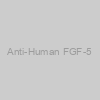 Anti-Human FGF-5 |
|||
| GWB-BIG4DC | GenWay Biotech | 500ug | Ask for price |


